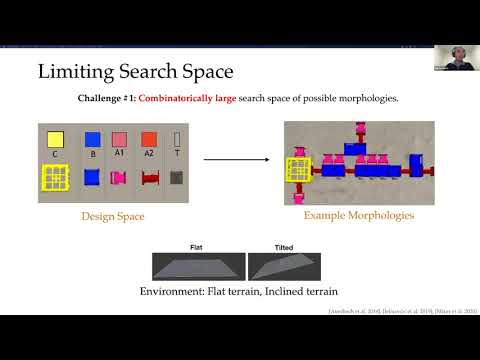Description:
Explore the concept of embodied intelligence in this Stanford HAI seminar presented by computer science PhD candidate Agrim Gupta. Delve into the intricate relationships between environmental complexity, evolved morphology, and the learnability of intelligent control. Learn about the DERL framework, which enables the evolution of agents with diverse morphologies to tackle complex locomotion and manipulation tasks. Discover insights into the connections between environmental physics, embodied intelligence, and rapid learning evolution. Examine topics such as disembodied AI, challenges in embodied agents, distributed asynchronous evolution, innate behaviors, and the Baldwin effect. Gain understanding of potential future directions including coevolution, morphology aging, scaling laws, and modular design spaces in the field of embodied artificial intelligence.

Towards Understanding and Building Embodied Intelligence
Add to list
#Computer Science
#Artificial Intelligence
#Engineering
#Robotics
#Science
#Biology
#Evolutionary Biology